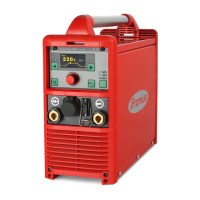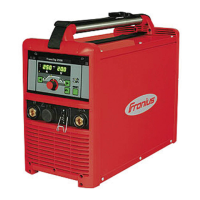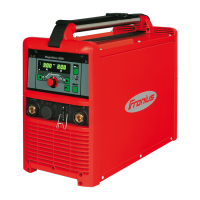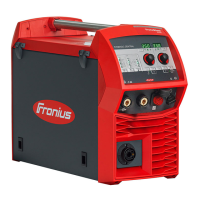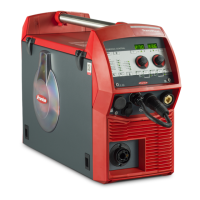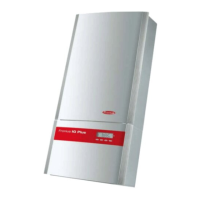5. Shield, if necessary
- Shield other devices in the vicinity
- Shield the entire welding installation
EMF measures Electromagnetic fields may cause health problems that are not yet known:
- Effects on the health of persons close by, e.g., those with pacemakers and hearing
aids
- Persons with pacemakers must seek advice from their doctor before staying in the
immediate vicinity of the device and the welding process
- Keep distances between welding cables and the head/torso of the welder as large
as possible for safety reasons
- Do not carry welding cables and hosepacks over one's shoulder or wrap them
around one's body or body parts
Particular Hazard
Areas
Keep hands, hair, loose clothing, and tools away from moving parts, such as:
- fans
- gears
- rollers
- shafts
- wirespools and welding wires.
Do not reach into rotating gears of the wire drive or into rotating drive parts.
Covers and side parts must only be opened/removed during maintenance and repair
work.
During operation:
- Ensure that all covers are closed, and all side parts have been mounted properly.
- Keep all covers and side parts closed.
The protrusion of welding wire from the welding torch represents a high risk of injury
(cuts to the hand, facial and eye injuries, etc.)
Therefore always hold the welding torch away from the body (devices with wirefeeder)
and use suitable protective goggles.
Do not touch the workpiece during or after welding—burning hazard.
Slag may fly off cooling workpieces. Therefore, also wear regulation-compliant protective
equipment when reworking workpieces and ensure that other persons are sufficiently
protected.
Leave the welding torch and other parts with a high operating temperature to cool before
working on them.
Special regulations apply in areas at risk of fire or explosion
– follow the appropriate national and international regulations.
Power sources for work in areas with increased electrical hazard (e.g. boilers) must be
labeled with the symbol (Safety). However, the power source may not be located in such
areas.
Risk of scalding due to leaking coolant. Switch off the cooling unit before disconnecting
connections for the coolant supply or return.
When handling coolant, observe the information on the coolant safety data sheet. The
coolant safety data sheet can be obtained from your service center or via the manufac-
turer’s website.
12
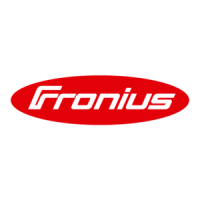
